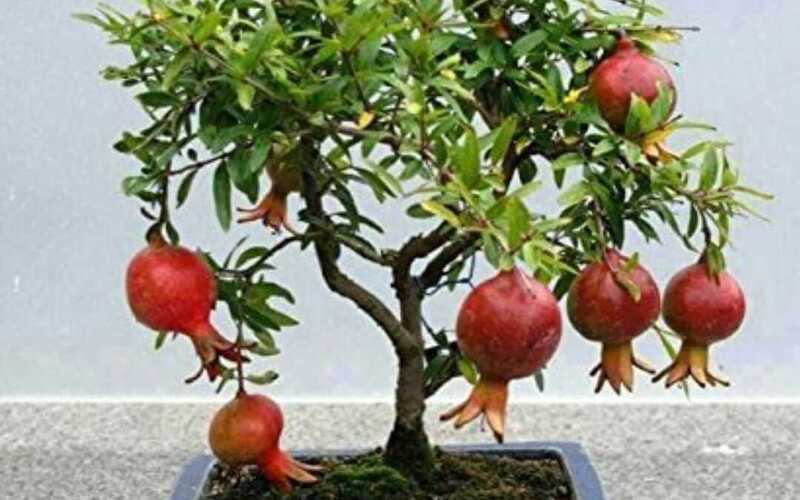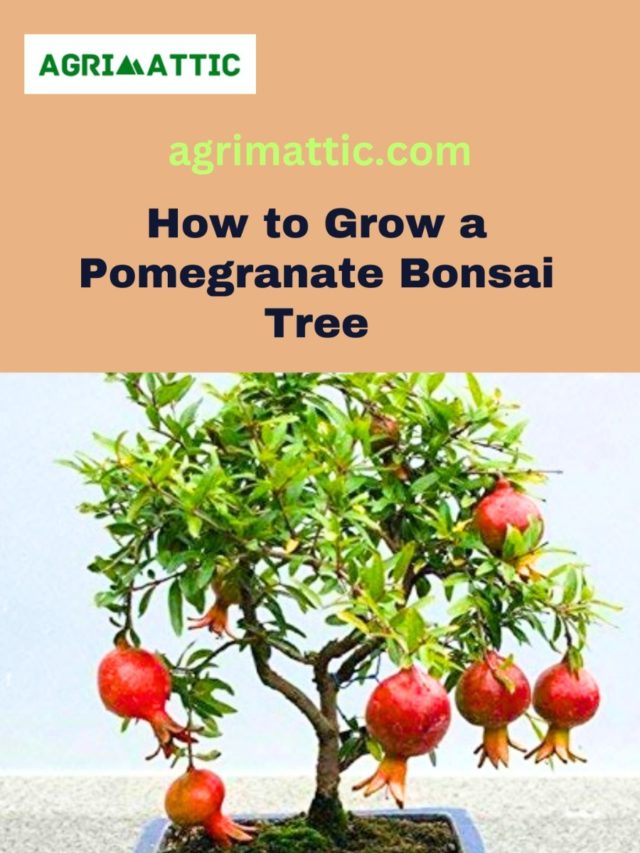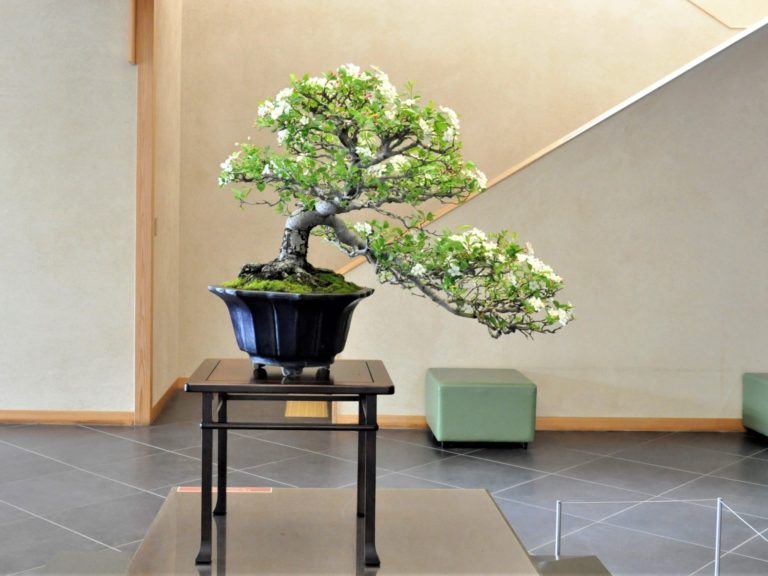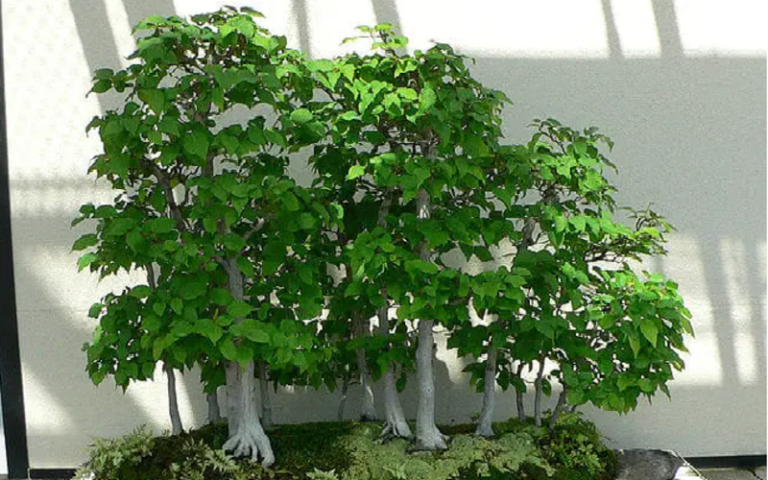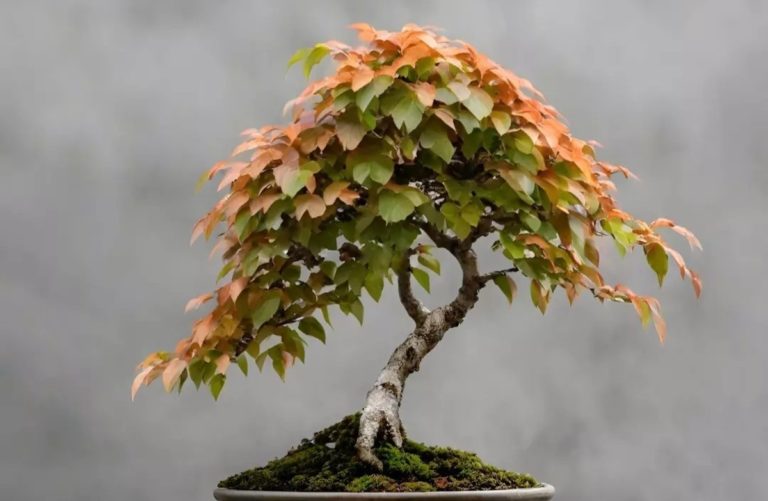Pomegranate Bonsai Tree: A Unique Addition to Your Indoor Garden
You may have heard about bonsai trees if you enjoy gardening. They are tiny trees cultivated in small pots and carefully shaped to have an appealing shape. The pomegranate bonsai tree is one of the most popular types of bonsai trees. In this article, we will tell you all you need to know about it and how to care for it.
What is a Pomegranate Bonsai Tree?
Pomegranate bonsai trees are tiny pomegranate trees planted in small pots. Pomegranates are well-known for their sweet and tart flavour. The pomegranate bonsai tree is not only gorgeous but also yields edible fruits.
History and Origins of the Pomegranate Bonsai Tree
The pomegranate bonsai tree has been around for a long time and has deep historical roots in what is now Iran. Pomegranate fruit has been highly prized for generations owing to its cultural importance and medical usefulness. Many religions and civilizations associate the fruit with good fortune, fertile growth, and plenty.
However, the Japanese subsequently adopted bonsai cultivation, which originated in China. The art of bonsai involves training and sculpting miniature trees in tiny containers to achieve aesthetically appealing forms. The Japanese introduced bonsai to the western world in the 19th century, and it rapidly became a popular pastime.
A relatively recent addition to the world of bonsai cultivation is the pomegranate bonsai tree. In the 1990s, growers began experimenting with various varieties of fruit trees to create bonsai representations of them. The compact dimensions and gorgeous flowers of the pomegranate tree made it an ideal candidate for bonsai cultivation.
The pomegranate bonsai tree is widely admired by bonsai experts and hobbyists nowadays. It’s aesthetically pleasing, plus it gives us something delicious to eat. Because of its cultural and historical value, it is a wonderful addition to any backyard or front lawn.
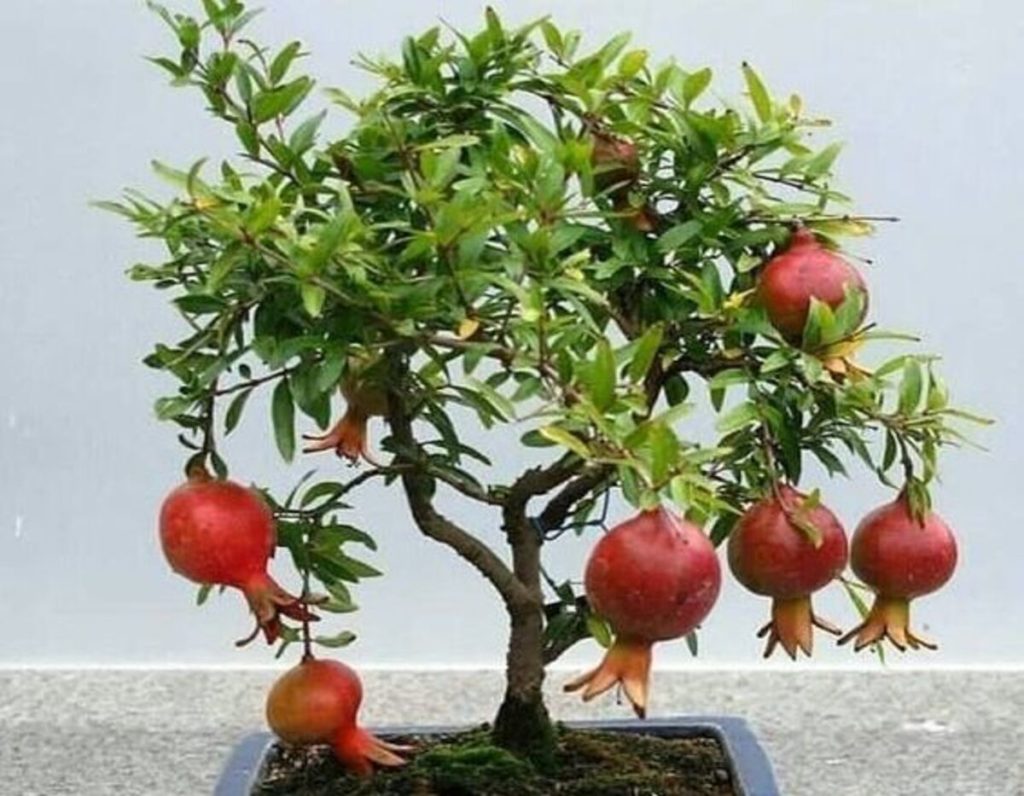
Types of Pomegranate Bonsai Trees
Different varieties of pomegranate bonsai plants have their own quirks and charms. The following are examples of well-liked types:
1. Wonderful: This variety is known for its large and juicy fruits, deep red arils, and vibrant flowers. It is a popular choice for bonsai cultivation due to its ability to withstand cold weather.
2. Nana: This type of pomegranate, which is also called mini pomegranate, has small leaves and makes small but tasty seeds. It is often used as a bonsai plant because it grows slowly and can make flowers and fruit when it is still young.
3. Angel Red: This variety has stunning red flowers and produces large, flavorful fruits. It is a great choice for bonsai cultivation due to its hardiness and disease resistance.
4. Grenada: This type is known for its big, sweet fruits and beautiful flowers. It is a popular choice for making bonsai because it is small and doesn’t need much care.
5. Ambrosia: This variety has soft and juicy arils and produces beautiful pink flowers. It is a great choice for bonsai cultivation due to its tolerance to heat and drought.
Each variety has its own distinct qualities, making it critical to select the appropriate one depending on your tastes and growing circumstances. A pomegranate bonsai tree, regardless of species, is a lovely and satisfying addition to any yard or home.
The Pomegranate Bonsai Tree and Its Symbolism
Pomegranate bonsai trees are not only attractive and satisfying to cultivate, but they also have symbolic meaning in many cultures and faiths. Here are some of its symbolic meanings:
Fertility and abundance: Pomegranates were considered a sign of fertility and plenty in ancient Greece. It was linked with Demeter, the goddess of agriculture, and was frequently presented as a gift to newlyweds in order to bless their union with fertility and wealth.
Prosperity and good fortune: Pomegranate is a sign of riches and good fortune in Chinese culture. During the Chinese New Year, it is widely exhibited in homes and businesses to promote riches and success.
Life and rebirth: The pomegranate is a Christian symbol of life and regeneration. It is frequently featured in religious artwork as a symbol of the resurrection and eternal life.
Unity and love: Pomegranates are a sign of togetherness and love in Jewish tradition. It is frequently used in wedding rituals and blessings to signify the desire for a happy and loving marriage.
As you can see, the pomegranate bonsai tree holds significant symbolic meaning in many cultures and religions. Growing one in your garden or home not only adds beauty but also represents these deeper meanings and values.
Characteristics of the Pomegranate Bonsai Tree
Numerous characteristics of the pomegranate bonsai tree make it a popular bonsai species. Here are a few distinguishing characteristics:
- Small size: The pomegranate bonsai tree is a dwarf variety, meaning it stays small and compact, making it a great choice for indoor cultivation.
- Beautiful flowers: The pomegranate bonsai tree produces colorful blossoms ranging in hue from white to pink to red. The flowers blossom in the spring and summer, adding a vibrant burst of color to any environment.
- Edible fruit: The pomegranate bonsai tree bears fruit that is suitable for consumption. The fruit is rich in antioxidants and minerals and is renowned for its sweet and sour taste.
- Drought-tolerant: The pomegranate bonsai tree is native to dry, arid regions, making it highly adaptable to low moisture conditions. This makes it an excellent choice for areas with little rainfall or for growers who prefer low-maintenance plants.
- Hardy: Pomegranate bonsai trees are hardy and can handle a wide range of temperatures. This means that they can be grown outside in many different locations.
- Low maintenance: The little upkeep of a pomegranate bonsai tree makes it a rewarding houseplant. It may live for many years if given the proper care (including soil, water, and sunshine).
These are just a few of the many characteristics that make the pomegranate bonsai tree a great choice for bonsai cultivation. Whether grown for its beauty or for its fruit, it is sure to add color and interest to any garden or home.
How to Grow a Pomegranate Bonsai Tree
Growing a pomegranate bonsai tree can be gratifying, but it requires patience and attention. Here are some initial measures to assist you:
1. Choose the right variety: Select a dwarf pomegranate variety that is suitable for bonsai cultivation. Some popular varieties include ‘Wonderful’, ‘Nana’, ‘Angel Red’, ‘Grenada’, and ‘Ambrosia’.
2. Choose the right pot: Select an appropriate-sized bonsai container for your tree. The container must be shallow and equipped with drainage openings to enable excess water to escape.
3. Soil: Use a well-draining, sandy soil mix that is rich in nutrients. You can mix in some organic fertilizer to provide additional nutrients for your tree.
4. Pruning: Prune your tree regularly to maintain its shape and promote new growth. You can prune the roots and branches during the dormant season to keep your tree small and compact.
5. Watering: Regularly water your pomegranate bonsai tree, ensuring that the soil remains moist but not soggy. You can carefully water your tree with a watering can or spray container.
6. Light: Place your pomegranate bonsai tree in a location that is bright and sunny. It requires at least six hours of daily sunlight to flourish.
7.Temperature: The pomegranate bonsai tree prefers warm temperatures between 60 and 80°F. Protect it from frost and extreme temperatures, especially during the winter months.
Put your pomegranate bonsai tree somewhere bright and sunny. It requires at least six hours of direct sunshine every day to grow.
Benefits of the Pomegranate Bonsai Tree
The pomegranate bonsai tree has several aesthetic and physiological benefits. The following are some of the advantages of planting a pomegranate bonsai tree:
Aesthetic appeal: The pomegranate bonsai tree is a beautiful and vibrant plant that adds color and interest to any space. Its showy flowers and attractive fruit make it a popular choice for bonsai cultivation.
Air purifier: The pomegranate bonsai tree aids in air purification by absorbing airborne contaminants and pollutants. It can enhance the indoor air quality of your residence or office.
Edible fruit: The pomegranate bonsai tree has tasty fruit that is also full of minerals and vitamins. It can help improve your health and strengthen your defense system.
Medicinal properties: Traditional medicine has been using the pomegranate fruit for hundreds of years to treat problems like inflammation, high blood pressure, and stomach issues.
Low maintenance: The pomegranate bonsai tree is easy to care for and doesn’t need much maintenance, which makes it a great choice for busy growers or people who are just starting out with bonsai.
Drought-tolerant: The pomegranate bonsai tree does well in areas with little water. This makes it a good choice for growers in dry, desert areas.
Symbolic significance: As mentioned earlier, the pomegranate bonsai tree holds significant symbolic meaning in many cultures and religions, representing fertility, prosperity, life, rebirth, unity, and love.
These are just a few of the numerous advantages of planting a pomegranate bonsai tree. Whether cultivated for its aesthetic appeal, health advantages, or symbolic meaning, it will provide joy and beauty to your home or yard.

Styling and Design of the Pomegranate Bonsai Tree
The styling and design of the pomegranate bonsai tree can be a fun and creative process. Here are some popular styles and techniques used to create a beautiful and unique pomegranate bonsai:
Formal upright style: A straight, upright trunk with uniformly spaced branches forms a symmetrical crown in this design. It is a traditional and elegant technique that highlights the tree’s innate beauty.
Informal upright style: This style features a curved, slightly slanted trunk with irregularly spaced branches that create a more organic and natural appearance. It is a popular style that allows for more creative expression and experimentation.
Slanting style: This style features a slanted trunk with branches that emerge from one side of the tree, creating a diagonal silhouette. It is a dramatic and eye-catching style that can add a sense of movement and energy to your bonsai.
Cascade style: This style features a trunk that cascades downward, with branches that extend below the pot. It is a unique and striking style that can create a sense of drama and movement.
Broom style: This design has a straight, upright trunk with a rounded crown of broom-like branches. It is a basic and beautiful style that may promote balance and harmony.
When designing a pomegranate bonsai, you should consider both the desired aesthetic and the tree’s natural form and growth patterns. You can create a breathtaking, one-of-a-kind pomegranate bonsai tree that is a genuine work of art with a bit of imagination and experimentation.
How to Care for and Maintain a Pomegranate Bonsai Tree
Essential to the health and longevity of your pomegranate bonsai tree are its care and maintenance. Here are some care and maintenance tips for your pomegranate bonsai:
- Watering: The pomegranate bonsai tree requires consistent irrigation, particularly during the growing season. Thoroughly hydrate your bonsai, allowing excess water to drain from the container. Avoid entirely drying out the soil, but also avoid overwatering, as this can cause root decay.
- Fertilizing: Pomegranate bonsai trees benefit from regular fertilization during the growing season. Use a balanced, slow-release fertilizer or organic fertilizer every four to six weeks.
- Pruning: Regular pruning is essential for maintaining the shape and health of your pomegranate bonsai tree. Prune back new growth in the spring and summer, and remove any dead or damaged branches.
- Repotting: Pomegranate bonsai trees should be repotted every two to three years to prevent root-bound conditions. Use a well-draining soil mix and a slightly larger pot than the previous one.
- Sunlight: The optimal environment for pomegranate bonsai trees is direct sunlight, but they can also tolerate moderate shade. Avoid direct sunlight during the warmest portion of the day when placing your bonsai.
- Temperature: Pomegranate bonsai trees are tolerant of a wide range of temperatures and are robust. However, they can be harmed by cold temperatures because they prefer mild, dry conditions.
- Pest control: Common parasites such as aphids, mealybugs, and spider mites can cause damage to your bonsai’s leaves and blossoms. Use natural or chemical methods of vermin control as necessary.
By following these simple care and maintenance tips, you can keep your pomegranate bonsai tree healthy and beautiful for years to come. Remember to observe your bonsai regularly and adjust your care routine as needed to ensure its optimal health and growth.
Pomegranate Bonsai Tree care sheet
| Aspect | Care Tips |
| Watering | Regularly water the bonsai during the growing season, but avoid overwatering to prevent root rot. |
| Fertilizing | Use a balanced, slow-release or organic fertilizer every 4-6 weeks during the growing season. |
| Pruning | Regularly prune new growth in the spring and summer to maintain the shape and health of the bonsai. |
| Repotting | Repot every 2-3 years using well-draining soil mix in a slightly larger pot than the previous one. |
| Sunlight | Place the bonsai in a location with plenty of natural light, but avoid direct sunlight during midday. |
| Temperature | Pomegranate bonsai trees are hardy and can tolerate a range of temperatures, but prefer warm, dry conditions. |
| Pest control | Watch out for common pests, such as aphids, mealybugs, and spider mites, and use natural or chemical pest control methods as needed. |
These are brief tips, but for more details on each aspect, please refer to the sections above.
FAQ
Q: What is a pomegranate bonsai tree?
A: A pomegranate bonsai tree is a small, ornamental tree that is grown and trained to be a miniature version of a mature pomegranate tree.
Q: How tall can a pomegranate bonsai tree grow?
A: Pomegranate bonsai trees can grow up to 2–3 feet in height.
Q: Can pomegranate bonsai trees bear fruit?
A: Yes, pomegranate bonsai trees can produce fruit. However, they may require specific conditions, such as proper pollination and care, to bear fruit.
Q: Can pomegranate bonsai trees be grown indoors?
A: Yes, pomegranate bonsai trees can be grown indoors, but they still require plenty of natural light and proper care to thrive.
Q: How often should I water my pomegranate bonsai tree?
A: During the growth season, you should water pomegranate bonsai trees often, but don’t water them too much to prevent root rot. Before you water, it’s best to check how wet the dirt is.
Q: What type of soil mix should I use for my pomegranate bonsai tree?
A: Peat moss, perlite, and sand should be mixed together to make a soil mix for pomegranate bonsai trees that drains well.
Q: When should I prune my pomegranate bonsai tree?
A: Pomegranate bonsai trees should be pruned regularly in the spring and summer to maintain their shape and health.
Q: How often should I fertilize my pomegranate bonsai tree?
A: Pomegranate bonsai trees should be fertilized every 4-6 weeks during the growing season with a balanced, slow-release, or organic fertilizer.
Q: How often should I repot my pomegranate bonsai tree?
A: Pomegranate bonsai trees should be repotted every 2-3 years to prevent root-bound conditions.
Q: What are some common pests and diseases that can affect my pomegranate bonsai tree?
A: Aphids, mealybugs, and spider mites are all common pests that can hurt pomegranate bonsai trees. If care isn’t taken, diseases like root rot and white mildew can also happen.
Also Read:

